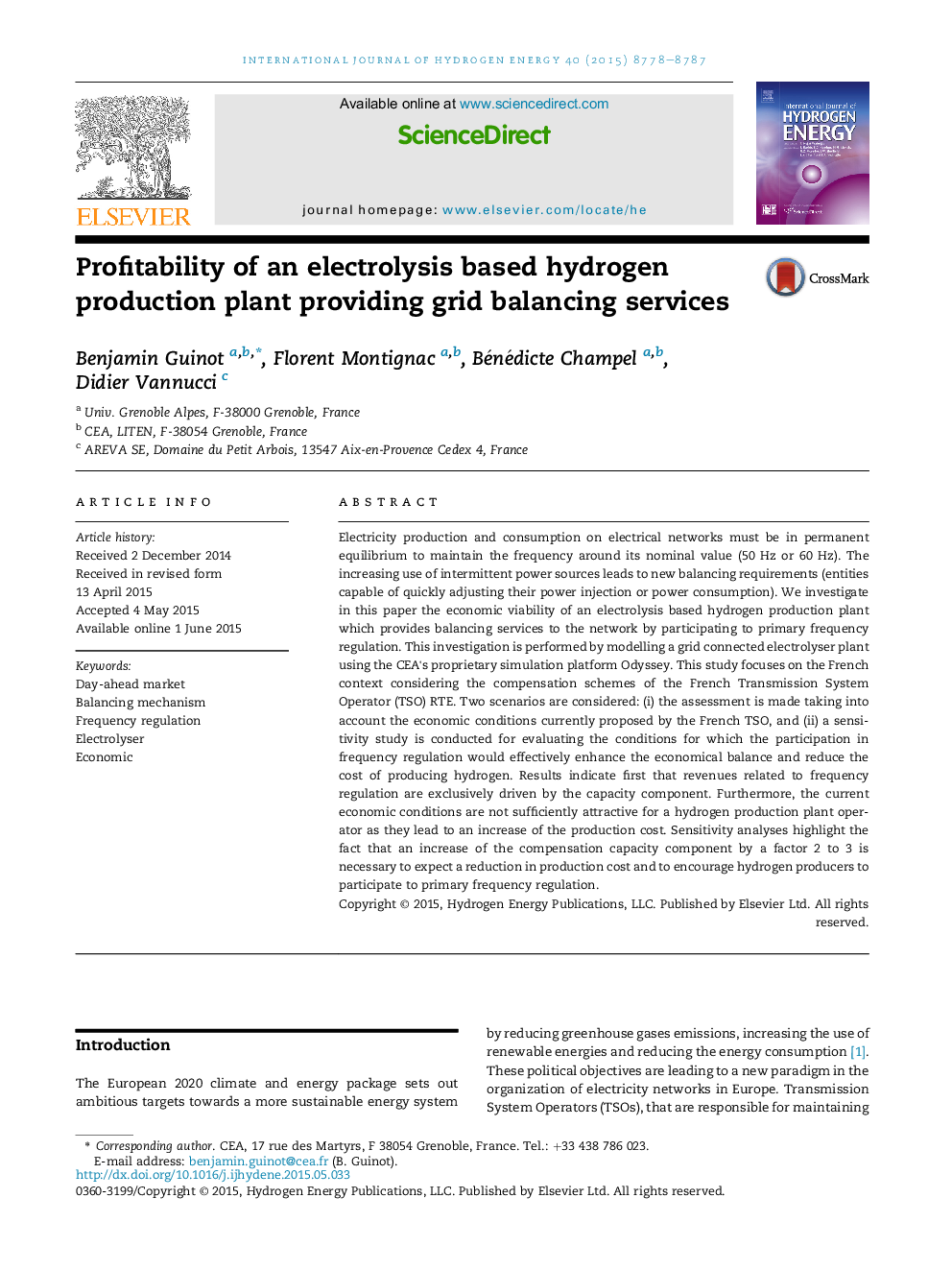| Article ID | Journal | Published Year | Pages | File Type |
|---|---|---|---|---|
| 1275117 | International Journal of Hydrogen Energy | 2015 | 10 Pages |
•We assessed the economic viability of an electrolyser providing grid services.•Revenues related to frequency regulation are driven by the capacity component.•Current compensation for primary regulation is insufficient for hydrogen producers.
Electricity production and consumption on electrical networks must be in permanent equilibrium to maintain the frequency around its nominal value (50 Hz or 60 Hz). The increasing use of intermittent power sources leads to new balancing requirements (entities capable of quickly adjusting their power injection or power consumption). We investigate in this paper the economic viability of an electrolysis based hydrogen production plant which provides balancing services to the network by participating to primary frequency regulation. This investigation is performed by modelling a grid connected electrolyser plant using the CEA's proprietary simulation platform Odyssey. This study focuses on the French context considering the compensation schemes of the French Transmission System Operator (TSO) RTE. Two scenarios are considered: (i) the assessment is made taking into account the economic conditions currently proposed by the French TSO, and (ii) a sensitivity study is conducted for evaluating the conditions for which the participation in frequency regulation would effectively enhance the economical balance and reduce the cost of producing hydrogen. Results indicate first that revenues related to frequency regulation are exclusively driven by the capacity component. Furthermore, the current economic conditions are not sufficiently attractive for a hydrogen production plant operator as they lead to an increase of the production cost. Sensitivity analyses highlight the fact that an increase of the compensation capacity component by a factor 2 to 3 is necessary to expect a reduction in production cost and to encourage hydrogen producers to participate to primary frequency regulation.
